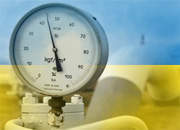This proposal was first made by Naftogaz in summer 2014 and is currently being considered by the Arbitration Institute of the Stockholm Chamber of Commerce.
Balancing gas volumes arise because of the specifics of transmitting gas. Within a period of time, the volume of gas that enters the system cannot correspond to the volume exiting to neighbouring GTS to the last cubic meter. These balancing volumes can amount to up to several percent of the total transported volume for the period.
Gazprom’s counterclaim relates to 5 mcm of balancing gas formed during four months of 2014, in the period when Naftogaz did not import Russian gas for Ukraine. The volume transported by Ukraine to the EU during the same months amounted to 17 420 mcm. The dispute thus relates to 0.03% of the transmitted volume.
Under a standard European balancing practice, these discrepancies are netted by the parties in the next period.
Gazprom insists that Naftogaz pays penalties for volumes of balancing gas that have arisen at the end of each month when Naftogaz did not import Russian gas for Ukraine. Until the dispute is resolved, Naftogaz treats the balancing gas volumes as gas owned by Gazprom.
The uncertainty regarding treatment of balancing gas existed in previous years as well, when Naftogaz was pressured by Gazprom to buy these volumes. Naftogaz expects that the parties will find a way to resolve the issue in line with standard European gas market practices, including through arbitration.
26 Декабря 2025 | пятница | 18:24


